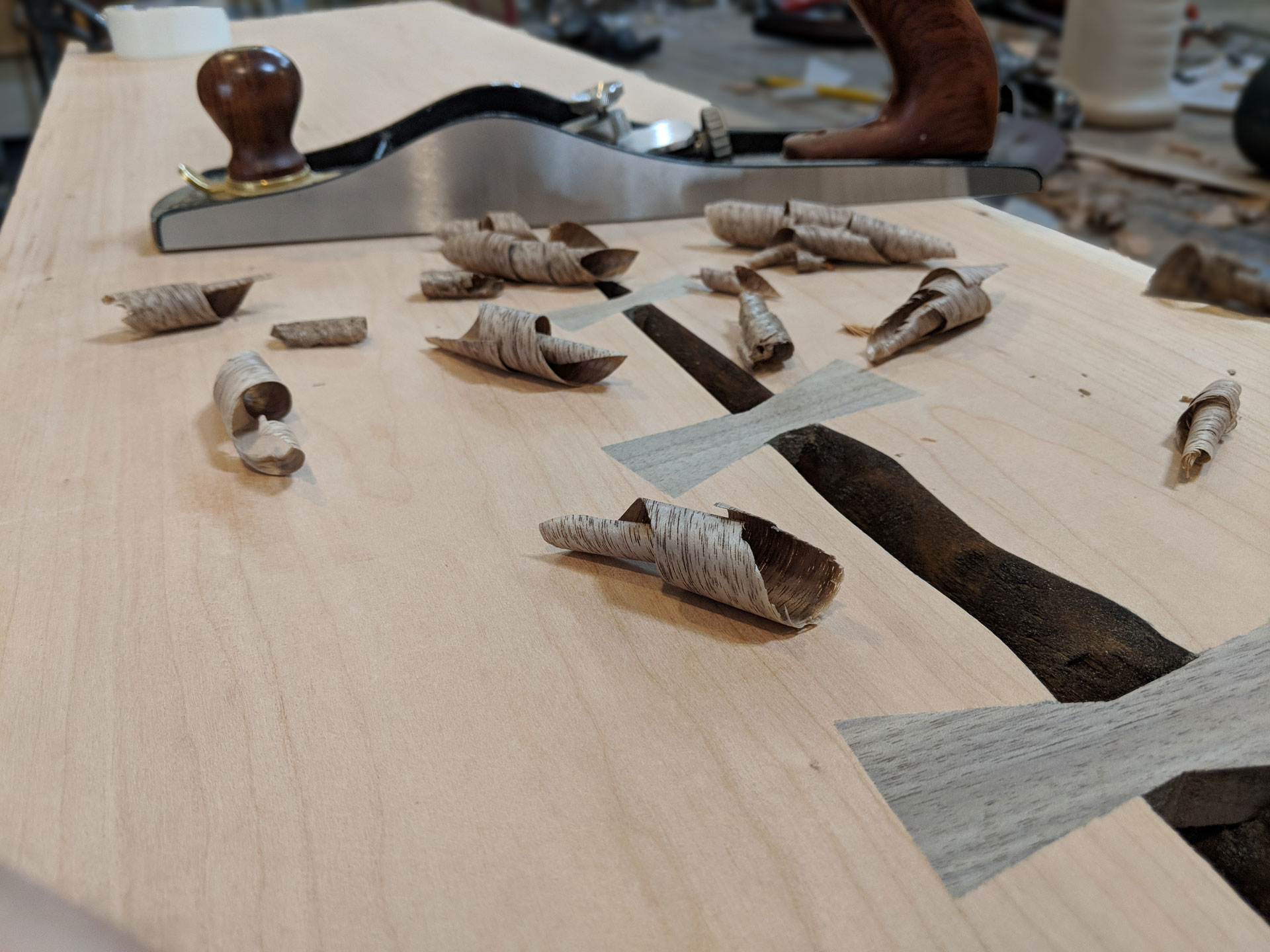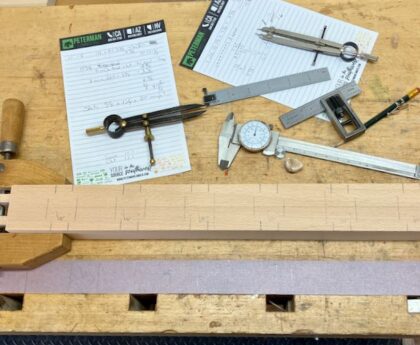In this step-by-step guide, I’ll show you how to create stylish wooden bow tie inlays using nothing but a mallet and chisel. Follow along as I walk you through the process of cutting, shaping, and assembling these eye-catching accessories.
Materials Needed:
- Wood of your choice
- Mallet
- Chisel
- Arrow (for marking)
- Double stick tape
- Razor blade or making knife
- Sandpaper
- Wood glue
- James King’s persuader (hammer)
- Block (to prevent splintering)
- Finish for wood
Step 1: Cut and Mark Your Bow Ties

Start by cutting out your bow tie shapes from the chosen wood. Once cut, decide which side you want to face up and mark it with an arrow for consistency. If the bow tie is not perfectly symmetrical, and you accidentally get it turned around, you will not have a good tight fit.
Step 2: Bevel the Edges

Using a rasp or file, introduce a slight bevel to all sides of the bow tie pieces. With a slight bevel, the bow tie will act as a wedge. When you drive it into the pocket, it will tighten up, creating a tight fit. This will also remove any bandsaw marks, making the edges look crisp.
Step 3: Arrange and Tape

Lay out your bow tie pieces in a desired pattern and secure them with double stick tape, beveled side down. Cut the tape flush with the bow tie to ensure it doesn’t interfere with the next steps.
Step 4: Cut Along the Outline

Using a razor blade or making knife, make light cuts along the outline of the bow tie pieces. Approach from both sides to prevent any accidental over-cuts.
Step 5: Set Chisel Lines

Place the chisel along the cut lines and give it a gentle tap with the mallet. This sets the lines and makes them more visible.
Step 6: Chisel Across the Grain

Begin chiseling across the grain. This will help prevent splitting by severing the fibers. If you start out with the grain, the chisel will act like a splitting wedge, and you risk splitting your workpiece apart. Stay away from the layout line and gradually work towards the line.
Step 7: Check Depth and Squareness

If you are having trouble chiseling square, use a small square as a guide to help hold your chisel square to your workpiece.
Step 8: Trim and Clean Edges

Use a paring cut to trim any excess material and clean the edges with the chisel, ensuring a tight fit without gaps.
Step 9: Glue and Assemble

Apply wood glue to the bow tie pocket. Carefully insert the bow tie, ensuring it fits snugly. Use a persuader and a block to tap it in evenly.
Step 10: Smooth and Finish

Hand-plane the surface smooth, inspecting for any imperfections. Sand the bow tie for a polished finish, and apply a chosen finish to enhance the wood’s colors.

You’ve successfully crafted unique wooden bow ties using a mallet and chisel. These stylish accessories are not only a testament to your woodworking skills but also a creative addition to your wardrobe. Experiment with different wood types and finishes to personalize your bow ties and showcase your craftsmanship. Enjoy your newfound woodworking expertise!
If you want your bowties to look just like everyone else’s, you can use one of those plastic router bow tie templates to do the inlay. I don’t know why you would want to be bored, but if you do, here is how to inlay bow ties with a router template.
Step 1: Selecting Wood and Template Design Begin by choosing contrasting wood species for your inlay pieces. This will enhance the visual impact of the bow ties. Simultaneously, select or create a bow tie template that suits your project. Templates can be purchased or made from sturdy materials like acrylic or plywood.
Step 2: Preparing the Workpiece Secure the workpiece to a stable surface using clamps. Ensure it is level and won’t shift during the routing process. Smooth the surface with sandpaper to create a clean canvas for the inlay.
Step 3: Attaching the Template Position the bow tie template on the workpiece where you want the inlay. Use clamps to secure the template in place, ensuring it doesn’t move while routing. Double-check the alignment to guarantee accuracy in your inlay placement.
Step 4: Routing the Inlay Area Install an appropriate router bit for your bow tie size and set the router depth. Start by removing material within the template area. Move the router steadily, following the template’s contours. Take your time, making shallow passes to achieve clean and precise results.
Step 5: Fine-tuning with Chisels After routing, use chisels to refine the edges and corners of the inlay area. This step is crucial for achieving a snug fit with the bow tie pieces. Pay attention to detail, ensuring a seamless integration between the inlay and the workpiece.
Step 6: Crafting Bow Tie Pieces Trace the bow tie template onto the contrasting wood species and carefully cut out the shapes using a bandsaw or coping saw. Sand the bow tie pieces to create smooth edges and a flawless finish.
Step 7: Gluing the Inlay Apply wood glue to both the inlay area and the bow tie pieces. Carefully fit the bow tie pieces into the routed area, ensuring a tight bond. Wipe away excess glue and use clamps to hold the pieces together while the glue dries.
Step 8: Final Touches and Finishing Once the glue is fully dried, remove any excess material and sand the entire surface for a smooth finish. Optionally, apply a finish of your choice to enhance the wood’s natural beauty and protect the inlay.





